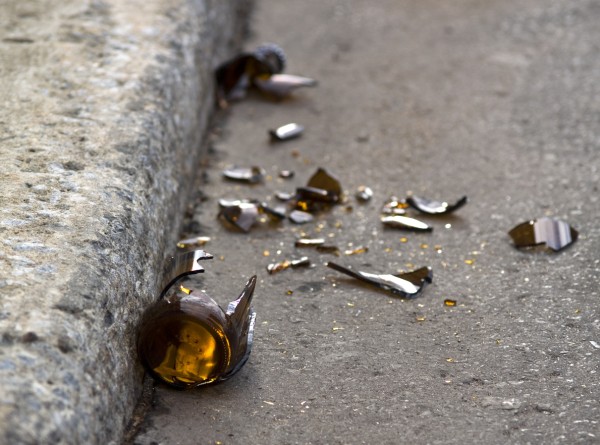References
- NZIER. Costs of alcohol harms in New Zealand: Updating the evidence with recent research. A report for the Ministry of Health. 2024. Retrieved from: https://www.health.govt.nz/system/files/2024-06/costs-of-alcohol-harms-in-new-zealand-2may24-v2.docx
- Chambers T, Mizdrak A, Jones AC et al. Estimated alcohol-attributable health burden in Aotearoa New Zealand. June 18, 2024. https://doi.org/10.60967/healthnz.27048892
- Alcohol Healthwatch. Evidence-based alcohol policies: Building a fairer and healthier future for Aotearoa New Zealand. Auckland: Alcohol Healthwatch. 2020.
- Chambers T, Mizdrak A, Herbert S et al. Interventions to reduce alcohol’s harms to health: a modelling study. Wellington: Te Whatu Ora – Health New Zealand. 2023.
- Kookiri ki Taamakimakaurau Trust. Kaupapa Te Rapu Taamakimakaurau Whaarangi Meka (Fact Sheet): Too many bottle shops in the community. 2024 Sep 25. https://www.kokirikt.co.nz/post/new-research-puts-lived-experience-at-centre-of-maaori-alcohol-harm-prevention (accessed 30 Sept 2024).
- Connor J, Maclennan B, Huckle T et al. Changes in the incidence of assault after restrictions on late‐night alcohol sales in New Zealand: evaluation of a natural experiment using hospitalization and police data. Addiction. 2021 Apr;116(4):788-98.
- Nepal S, Kypri K, Tekelab T et al. Effects of extensions and restrictions in alcohol trading hours on the incidence of assault and unintentional injury: systematic review. Journal of Studies on Alcohol and Drugs. 2020 Jan;81(1):5-23.
- Wilkinson C, Livingston M, Room R. Impacts of changes to trading hours of liquor licences on alcohol-related harm: a systematic review 2005–2015. Public Health Research & Practice. 2016;26(4):e2641644. http://dx.doi.org/10.17061/phrp2641644
- Babor T, Casswell S, Graham K et al. Alcohol: No Ordinary Commodity (3rd edition). Oxford, UK: Oxford University Press. 2023.
- [Casswell S, Huckle T, Wall M, Yeh LC. International alcohol control study: pricing data and hours of purchase predict heavier drinking. Alcoholism: clinical and experimental research. 2014 May;38(5):1425-31.
- Shortt NK, Rind E, Pearce J et al.. Alcohol risk environments, vulnerability, and social inequalities in alcohol consumption. Annals of the American Association of Geographers. 2018; Sep 3;108(5):1210-27. https://doi.org/10.1080/24694452.2018.1431105
- Connor JL, Kypri K, Bell ML, Cousins K. Alcohol outlet density, levels of drinking and alcohol-related harm in New Zealand: a national study. J Epidemiol Community Health. 2011 Oct 1;65(10):841-6.
- Jackson N, Robertson, H. A review of Territorial Authority progress towards Local Alcohol Policy development (2nd edition). Auckland: Alcohol Healthwatch. 2017.
- Tokalau T. Auckland’s new liquor policy approved after lengthy legal battle. RNZ. 2024 Aug 7. https://www.rnz.co.nz/news/ldr/524407/auckland-s-new-liquor-policy-approved-after-lengthy-legal-battle (accessed 25 September 2024).
- Maclennan B, Kypri K, Connor J. Do New Zealand communities have greater input to local alcohol policy? Population surveys before and after new legislation. International Journal of Drug Policy. 2019 Dec 1;74:112-5.
- Kypri K, Maclennan B, Brausch S et al. Did New Zealand’s new alcohol legislation achieve its object of facilitating public input? Qualitative study of Māori communities. Drug and Alcohol Review. 2019 May;38(4):331-8.
- Simpson Grierson. Landmark alcohol decision has national implications. 2023 May 8. https://www.simpsongrierson.com/insights-news/legal-updates/landmark-alcohol-decision-has-national-implications (accessed 22 September 2024).
- MacLennan B, Kypri K, Langley J et al. Public opinion and local government alcohol policy: a study of seven New Zealand communities. Contemporary Drug Problems. 2011 Sep;38(3):367-86.
- Wyllie A. Public support for alcohol policies in the Auckland Council Region: Report prepared for Auckland Regional Public Health Service. Auckland: Wyllie & Associates. 2014.
- Maynard K. Te Tiriti o Waitangi and alcohol law. Wellington: Te Hiringa Hauora | Health Promotion Agency. 2022. Retrieved from: https://www.hpa.org.nz/news/the-place-of-te-tiriti-owaitangi-in-alcohol-law.
- Kypri K, Livingston M. Incidence of assault in Sydney, Australia, throughout 5 years of alcohol trading hour restrictions: controlled before‐and‐after study. Addiction. 2020 Nov;115(11):2045-54.
- Burke S, Roseveare C. (2024). Alcohol-related harms now available on demand. https://www.phcc.org.nz/briefing/alcohol-related-harms-now-available-demand
About the Briefing
Public health expert commentary and analysis on the challenges facing Aotearoa New Zealand and evidence-based solutions.
Subscribe

Public Health Expert Briefing
Get the latest insights from the public health research community delivered straight to your inbox for free. Subscribe to stay up to date with the latest research, analysis and commentary from the Public Health Expert Briefing.
